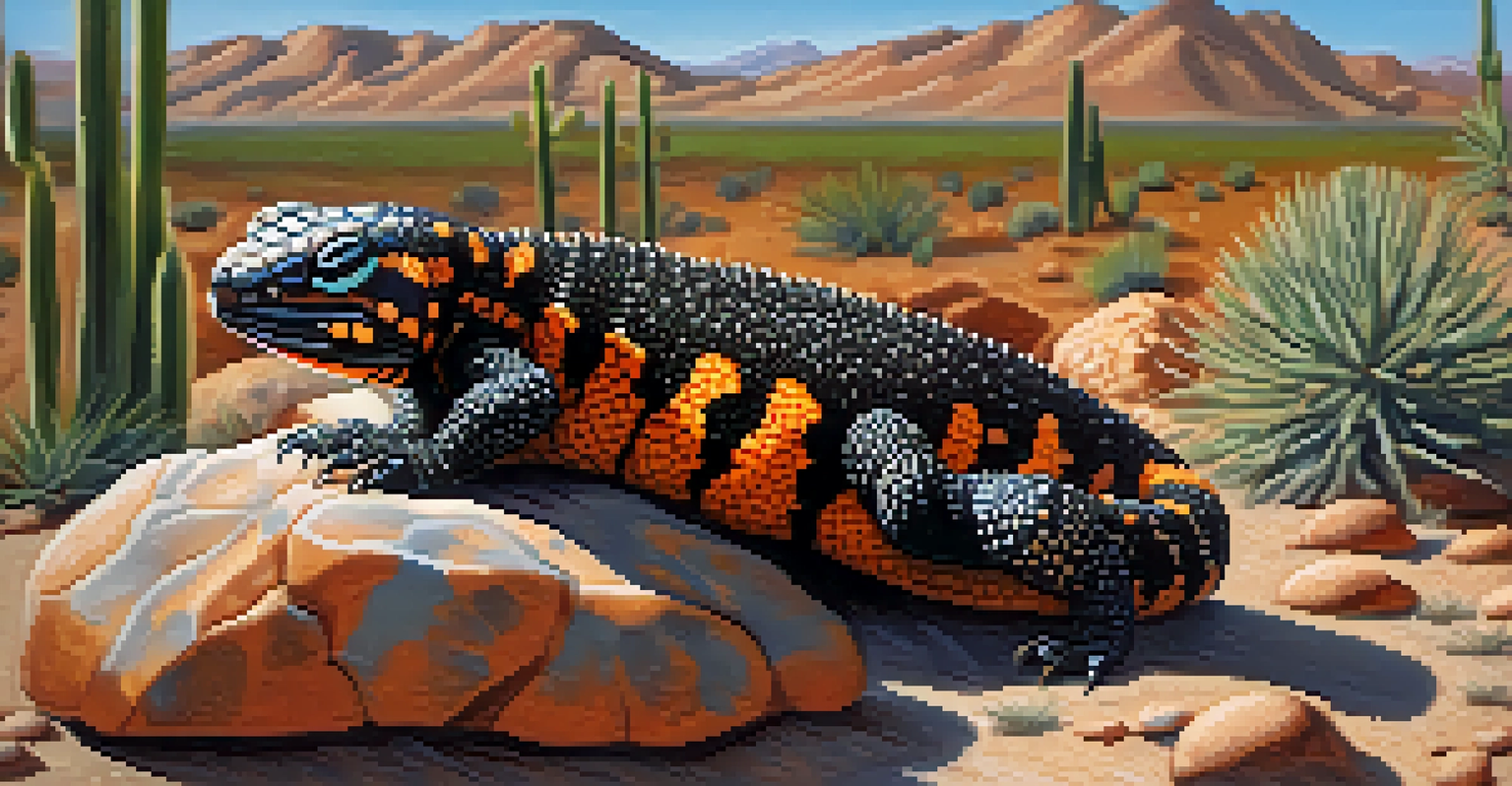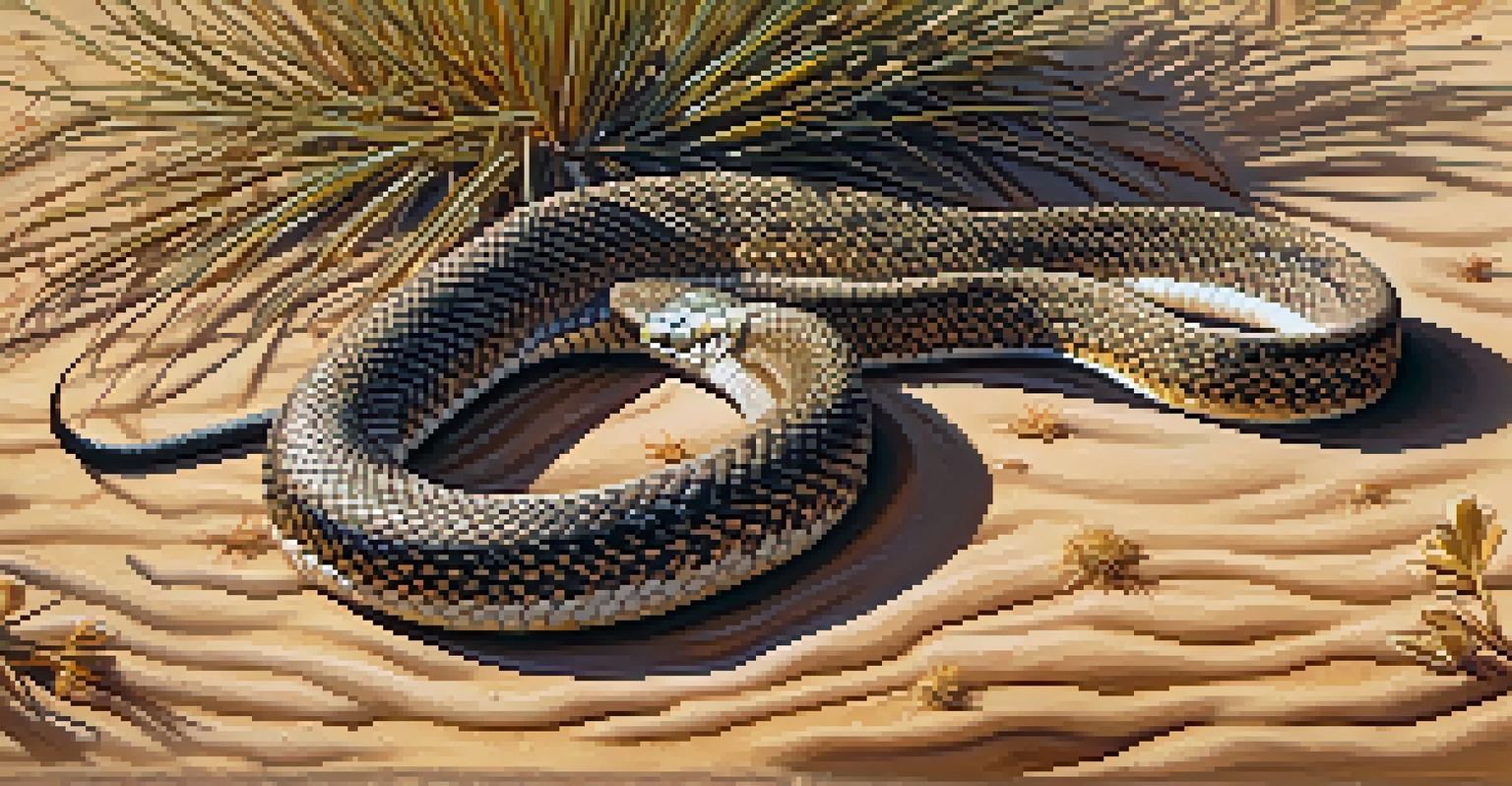Reptiles of Tucson: Unique Species of the Sonoran Desert

Introduction to Tucson's Reptilian Diversity
Tucson, nestled in the heart of the Sonoran Desert, is a haven for reptile enthusiasts. With its unique climate and diverse habitats, the area hosts a variety of reptilian species, each adapted to thrive in this arid environment. From lizards to snakes, the reptiles of Tucson offer a glimpse into the rich biodiversity of the region.
The beauty of the natural world lies in the details.
The Sonoran Desert is characterized by its stunning landscapes, featuring cacti, rocky outcrops, and sandy plains. These elements create microhabitats that support various reptiles, making Tucson a hotspot for wildlife observation. Whether you’re a local or a visitor, exploring these species can be an exciting adventure.
Related Resource
Understanding the reptiles of Tucson is not just about appreciation; it’s also vital for conservation efforts. By learning about these creatures, we can better protect their habitats and ensure they continue to thrive in the wild.
Common Lizards Found in Tucson
Lizards are among the most visible reptiles in Tucson, with species like the Western Whiptail and the Desert Spiny Lizard often spotted basking in the sun. These lizards are not only captivating to watch but also play essential roles in the desert ecosystem, controlling insect populations. The vibrant colors and quick movements of these reptiles make them a favorite for wildlife watchers.

The Western Whiptail, known for its speed, can often be seen darting across trails and sandy areas. Its slender body and long tail help it navigate the desert terrain quickly. On the other hand, the Desert Spiny Lizard boasts a unique spiny texture on its skin that aids in camouflage among the rocks and shrubs.
Tucson's Unique Reptilian Biodiversity
Tucson's diverse habitats support a variety of reptiles, making it a prime location for wildlife observation and appreciation.
Observing these lizards can be a delightful experience, especially during the warmer months when they are most active. Their fascinating behaviors and adaptations to the desert environment provide insight into the resilience of life in such a harsh landscape.
The Majestic Gila Monster
One of the most iconic reptiles in Tucson is the Gila monster, a large, venomous lizard known for its distinctive orange and black coloration. This fascinating creature is often misunderstood due to its venom, which is primarily used for defense rather than hunting. Gila monsters are a rare sight, but their presence adds to the allure of Tucson's reptilian landscape.
In every walk with nature, one receives far more than he seeks.
These lizards are primarily nocturnal, emerging in the cooler evening hours to hunt for food. Their diet mainly consists of small mammals, birds, and eggs, which they locate using their keen sense of smell. While they may appear sluggish, Gila monsters can be surprisingly agile when necessary.
Related Resource
Conservation efforts are crucial for the survival of the Gila monster, as habitat loss poses a significant threat to its population. By understanding and respecting their role in the ecosystem, we can help ensure that these unique reptiles continue to thrive in Tucson.
The Elusive Coachwhip Snake
The Coachwhip snake is another fascinating reptile that calls Tucson home. Known for its long, slender body and distinctive coloration, this snake can be recognized by its whip-like appearance. Coachwhips are non-venomous and are often found in sandy or scrubby areas, where they hunt for small rodents and lizards.
These snakes are incredibly fast and agile, often surprising those who encounter them in the wild. Their speed is a significant advantage, allowing them to escape predators and catch prey. The Coachwhip's ability to swiftly navigate its environment showcases the adaptability of reptiles in the Sonoran Desert.
Importance of Conservation Efforts
Conservation initiatives are crucial to protect Tucson's reptiles from habitat loss and ensure their survival in the Sonoran Desert.
While they can be intimidating due to their size and speed, Coachwhip snakes are generally harmless to humans. Observing them in their natural habitat can be a thrilling experience, highlighting the beauty and diversity of Tucson's reptilian residents.
Rattlesnakes: Nature's Warning System
Rattlesnakes are perhaps the most well-known reptiles in Tucson, and for good reason. These snakes are equipped with a unique rattle on their tails, which serves as a warning to potential threats. While they are often feared, rattlesnakes play a vital role in maintaining the balance of the desert ecosystem by controlling rodent populations.
Tucson is home to several species of rattlesnakes, including the Western Diamondback and the Mojave Rattlesnake. Each species has its own distinct markings and behaviors, making them intriguing to study. Despite their reputation, rattlesnakes prefer to avoid confrontation and will typically retreat if given the chance.
Related Resource
Understanding rattlesnakes can help dispel myths and fears surrounding these reptiles. By learning how to safely coexist with them, residents and visitors can enjoy the beauty of Tucson's wildlife while respecting these important predators.
Protecting Tucson's Reptilian Heritage
As urban development continues to expand in Tucson, the preservation of reptile habitats becomes increasingly critical. Many species face challenges such as habitat loss, pollution, and climate change, all of which threaten their survival. Conservation efforts are essential to maintain the delicate balance of the Sonoran Desert ecosystem.
Local organizations and wildlife enthusiasts are working tirelessly to protect these reptiles through education and habitat restoration programs. By raising awareness about the importance of reptiles in the ecosystem, they hope to foster a sense of stewardship among the community. Participating in these initiatives can make a significant difference in preserving Tucson's unique wildlife.
Learning About Local Reptiles
Understanding the behaviors and roles of Tucson's reptiles enhances outdoor experiences and fosters a deeper connection to nature.
Every small action counts, whether it's supporting local conservation groups or simply respecting wildlife while exploring the desert. Together, we can ensure that Tucson's rich reptilian heritage remains intact for future generations to appreciate and enjoy.
Conclusion: Embracing Tucson's Reptilian Wonders
Tucson's reptiles are not just fascinating creatures; they are integral to the desert's ecological health. Each species contributes uniquely to the ecosystem, from controlling pests to serving as prey for other wildlife. Experiencing these reptiles in their natural habitat can deepen our appreciation for the intricate web of life in the Sonoran Desert.
Whether you are hiking in the foothills or simply exploring your backyard, there are countless opportunities to observe these remarkable reptiles. Taking the time to learn about their behaviors and habitats can enhance your outdoor adventures and foster a greater connection to nature.

As we continue to discover and celebrate the unique reptiles of Tucson, let us also commit to protecting their habitats. By doing so, we ensure that both residents and visitors can enjoy the wonders of Tucson's reptilian world for years to come.